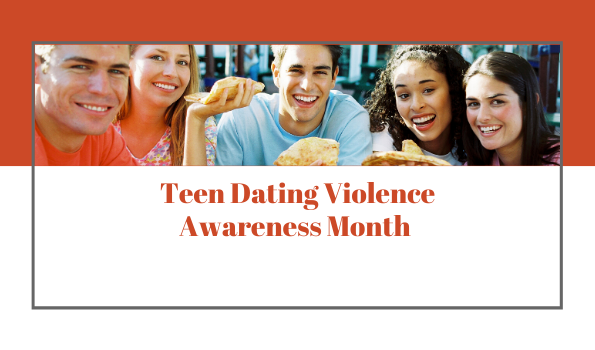
This month the National Hispanic and Latino MHTTC is recognizing the Teen Dating Violence Awareness Month (TDVAM). This year TDVAM campaign focuses on providing teens with knowledge about teen dating violence and encouraging them to share what you know with your family or peers (#1Thing).

What do you need to know about TDV among Hispanic and Latino students and clients?
The Centers for Disease Control and Prevention (2020) defined teen dating violence (TDV) as any form of intimate partner violence, including physical violence, sexual violence, psychological violence, and stalking that occurs during a romantic or dating relationship between two people.1 Latinos may suffer disproportionate harms from dating violence because they are less likely to report the problem or to seek help. Latino and White students (6.9%) more commonly report sexual dating violence than black students (4.8%). Also, it is more widely reported by Hispanic females (11.4%) and White females (11.1%) students than among Black females (6.8%) students.2 Among the Hispanic and Latino culture, the cultural value of familism is a significant factor for reducing the risk of TDV. Previous investigations showed the Hispanic and Latino youth with a strong family bond with their parents are less likely to experience sexual TDV.3 The level of acculturation may increase the risk of exposure to an intimate partner or dating violence.4 However, Latinas with stronger cultural values had a lower risk of experiencing physical TDV than for Latinas with a higher acculturation rate.5 Moreover, Hispanic and Latino youth with traditional gender roles (i.e., machismo and marianismo) were more likely to experience physical and psychological intimate partner violence as young adults.6

How do I help my Hispanic and Latino students and clients?
As a teacher or school mental health provider, you can increase your student's or client’s knowledge about TVD. The website loveisrespect.org can help your students or clients getting help if they are confronting TVD. The information is available in English and Spanish. Also, the use of culturally sensitive evidence-based or promising practices should be encouraged; one program with promising evidence to reduce TVD among Hispanic and Latino youth is the Ending Violence Program. This is a school-based program that serves to improve Hispanic and Latino youth knowledge of dating violence, to reduce their tolerance for aggressive or violent behavior, and to enhance their perceptions about getting help if they experienced dating violence).7 The curriculum can teach newcomers students about domestic violence and the law aiming to reduce dating violence.
References:
1 Centers for Disease Control and Prevention, Preventing Teen Dating Violence Fact Sheet. 2020.
2 Kann L, McManus T, Harris WA, Shanklin SL, Flint KH, Queen B, et al. Youth Risk Behavior Surveillance — United States, 2017. MMWR 2018: 67(8).
3 Reyes HLM, Foshee VA, Klevens J, Tharp AT, Chapman MV, Chen MS, Ennett ST. Familial influences on dating violence victimization among Latino youth. J Aggress Maltreat Trauma. 2016;25(8):773-792. doi: 10.1080/10926771.2016.1210270
4 Sanderson M, Coker AL, Roberts RE, et al. Acculturation, ethnic identity, and dating violence among Latino ninth-grade students. Prev Med 2004;39:373–83.
5 Ramos MM, Green D, Booker J, Nelson A. Immigration status, acculturation, and dating violence risk for Hispanic adolescent girls in New Mexico. Matern Child Health J. 2011 Oct;15(7):1076-80. doi: 10.1007/s10995-010-0653-0.
6 Grest CV,Amaro H, Unger J. Longitudinal Predictors of Intimate Partner Violence Perpetration and Victimization in Latino Emerging Adults. J Youth Adolesc. 2018 Mar;47(3):560-574. doi: 10.1007/s10964-017-0663-y
7 Jaycox LH, McCaffrey D, Eiseman B, Aronoff J, Shelley GA, Collins RL, Marshall GN. Impact of a School-Based Dating Violence Prevention Program among Latino Teens: Randomized Controlled Effectiveness Trial. J Adolesc Health 2006;39:694–704.
